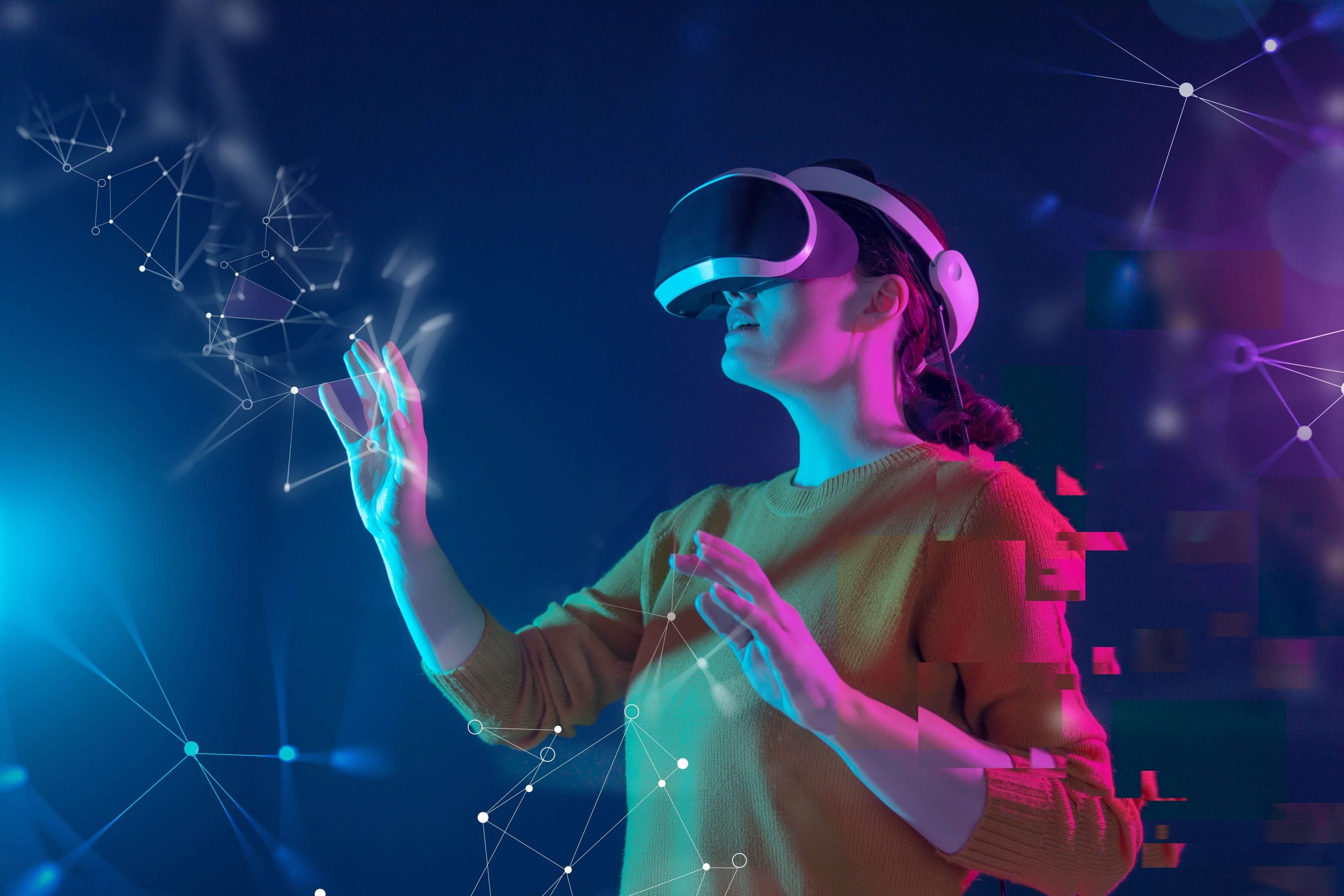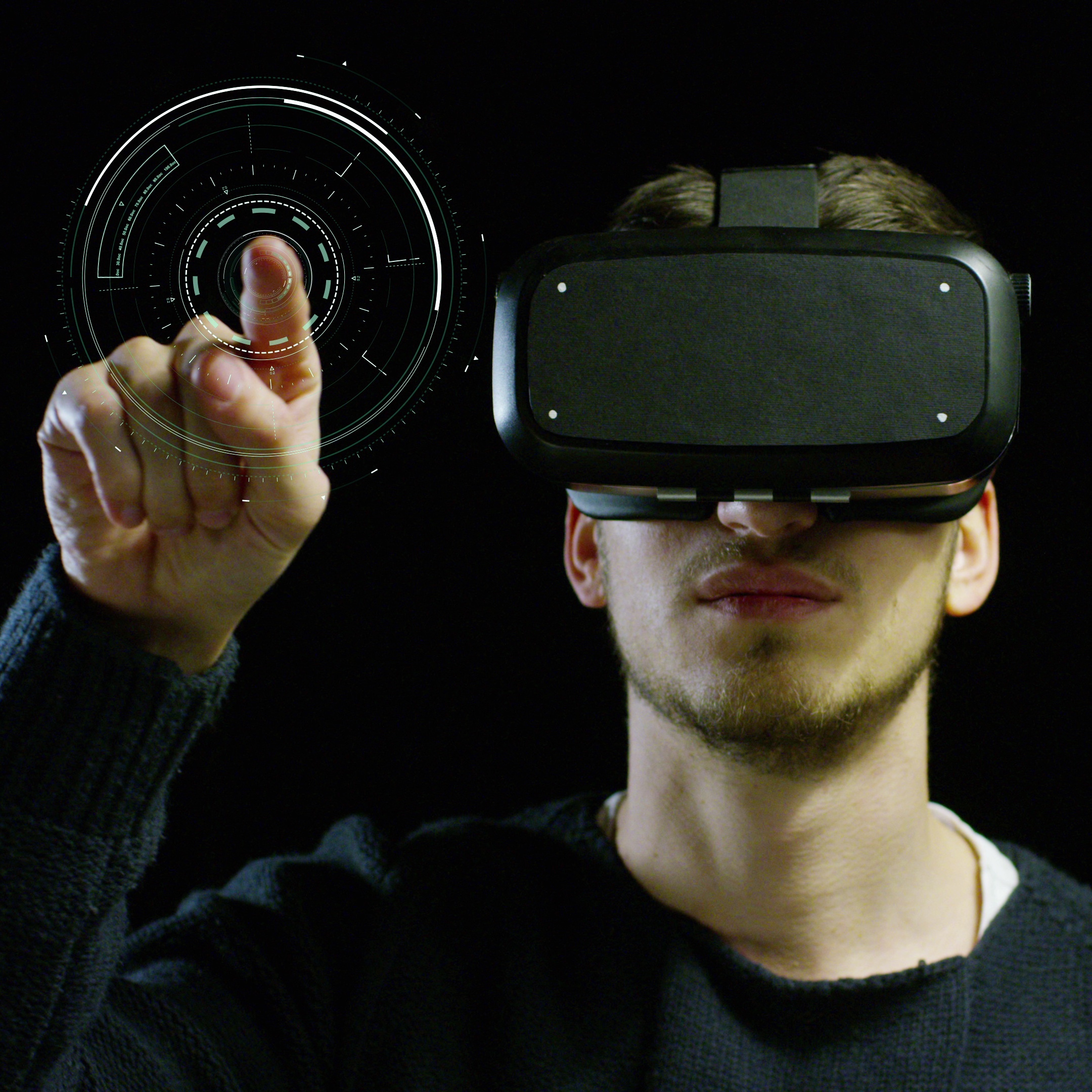The Synergy of AI-Driven VR and What It Means for Tech-Forward Businesses
VR is constantly maturing to a greater degree of realism. Once, you could only see a virtual world. Now, you can walk around it using VR locomotion accessories. You can literally feel an explosion, a gust of wind, or the heat following an explosion in-game if you’re complementing your VR glasses with a haptic vest or a haptic suit. Gamers can even feel a gun recoil with haptic vibration in gaming controllers and haptic gloves.
That’s not all. VR also has valuable use cases for businesses.
For example, VR makes it possible for people to tour a potential supplier or partner’s manufacturing facility rather than undertaking an in-person visit to a remote factory location. Meanwhile, tactile abilities in VR have been utilized to enable simulation training in risk-free environments.
Imagine what VR can do when supported with intelligence!
The convergence of AI and VR can elevate virtual reality, expanding the horizons of what is possible in immersive digital environments.
In this blog, we’ll look at how a synergy between AI and VR might play out.
What does AI-driven VR look like?
For the most part, AI + anything = improvement. We already know this from the AI tools we use in daily life. If you’ve used ChatGPT to pen an email or Grammarly to write an email, you very likely had a better email at the end of your exercise.
The goal of VR is to create an immersive experience. With AI, that immersiveness can be better. More believable. More engaging.
AI achieves this by analyzing and responding to user behavior in real-time. The user can command the AI-driven VR tool to alter their environment or might be able to converse with AI characters (also referred to as AI avatars) within the virtual world. To put it simply, with AI, the VR world responds to the user’s behavior and data and modifies what they see and hear.
This video offers a quick glimpse of how AI-driven VR enables responsiveness in virtual world avatars and its ability to reshape the virtual world itself.
In AI-driven VR gaming, this translates to the system responding actively to the player’s performance. For example, if AI detects that a participant is struggling with a particular challenge, it might reduce the difficulty or offer hints. Conversely, if the participant is excelling, the AI might increase the challenge or introduce new elements to keep them engaged.
Tech that brings AI and VR together
Allowing gestures and language from the real world to work the same way (and be understood) in a virtual world is critical to ensuring a sense of realism and seamlessness. AI makes this possible. Here’s how:
- Natural Language Processing (NLP):
Natural Language Processing (NLP) is an essential and almost inseparable part of AI-driven VR interactions. NLP enables AI-driven VR systems to understand and generate human language, thus facilitating seamless and intuitive communication in virtual environments.
Users can speak as they usually would to give commands, inquire about things, or participate in conversations (very much like the video we showcased at the start of this article). NLP eliminates the requirement to use traditional devices for input, thus making the whole experience more realistic.
- Gesture Recognition:
AI-powered gesture recognition adds a new layer of realism to VR. Machine learning algorithms teach machines to interpret hand movements, creating more natural and intuitive virtual interactions. Meanwhile, AI—relying on knowledge obtained at the ML stage—allows these gestures to continue to be understood and responded to by the AI-driven VR app.
Benefits of AI-driven VR
- AI-driven virtual world generation
As depicted in the video in the introduction, AI can create entirely new virtual worlds (sometimes beyond human imagination). Generative AI algorithms can operate autonomously and construct not just virtual landscapes but also characters and storylines, offering endless possibilities for immersive gaming.
In an AI-powered immersive future, AI-driven VR avatars and sophisticated social interaction algorithms can enable socializing (and networking) in VR. We’re talking virtual parties, conferences, and other social activities—very much like the virtual world nightclubs and movie theatres you may remember from the film Ready Player One, which depicts a virtual world in the year 2045 (watch the virtual nightclub scene here). When social interaction in the virtual world becomes a reality, it will not only help bridge geographical distances (to a greater extent than Zoom did) but also completely transform how we connect now.
- AI-driven VR environment adaptiveness
AI gathers and analyzes users in real time. This capability is fundamental to creating personalized VR content tailored to individual preferences and behaviors.
This level of personalization enhances immersion and provides invaluable insights for businesses. For instance, retailers can track customer behavior within VR shopping environments, optimizing product placement and marketing strategies. This (AI-enabled personalization) is already happening in brick-and-mortar stores, and it’s easy to see how it can be replicated when virtual stores become a reality.
AI also introduces unprecedented depth and complexity to gaming. Adaptive game mechanics respond dynamically to player actions, making every gaming experience distinct. We already talked about how AI can make the in-game experience more (or less) challenging in response to the player’s proficiency levels.
But this needn’t be a gaming-only benefit. AI-driven VR training simulations can similarly offer highly personalized, adaptive training across various industries, from aviation to manufacturing, improving efficiency, minimizing injuries, and reducing costs.
In an AI-powered immersive future, these very technological elements can be used to market cars (showcasing what driving them would feel like), among other sensory products and experiences.
- AI-driven VR personas/ avatars
Let us also look at another important phenomenon revolutionizing the VR scene—AI-driven VR avatars. AI gives VR avatars the capability to display lifelike behaviors, expressions, and even emotional depth. In the video at the start of this article, you saw how the user interacted with the avatars and even had them make changes to themselves and their environment.
In the workplace and beyond, AI-powered avatars can bridge geographical distances, creating a sense of presence through realistic interactions. We’re already living in a time when an AI candidate is running for parliament in the UK.
AI also revolutionizes education and training. In virtual classrooms, AI tutors powered by NLP offer personalized guidance, adapting to individual learning styles. Language courses can become more effective with AI characters providing dynamic practice within an immersive environment. In fact, learning anything can be easier with AI-driven VR. Imagine how much more feedback this learner could get in his VR piano lesson with an AI tutor in the mix. In an AI-powered immersive future, this could very well be a reality.
Considerations in AI-enabled VR development and utilization
While the fusion of AI and VR holds tremendous potential, it is not without its challenges and ethical considerations. Addressing these concerns is essential to ensure a responsible, inclusive, AI-powered, immersive future.
- Privacy and Data Security
VR experiences thrive on data. As we have described earlier in this blog, we collect data around gaze patterns and hand movements to enhance immersion. In other words, humans using AI-driven VR experience are being tracked fairly intrusively. Policy and regulations are yet to set rules and standards, and as such, all this data can become a target for malicious actors. As a consequence, data collection must be balanced with robust protection and anonymization techniques. Additionally, security measures must be in place to prevent harmful manipulations within virtual environments.
- Bias and Fairness
AI-driven VR has the potential to be incredible, but it can also inherit biases from its training data. This could lead to unfair representations within virtual environments and AI-driven characters. To ensure VR is a welcoming space for everyone, developers must train AI systems on diverse data and continuously monitor for bias.
AI must be exposed to sufficient and appropriate information to prevent it from perpetuating harmful stereotypes. Given that we have the opportunity to build new worlds, it is fair to expect that all individuals will be treated fairly and represented accurately in them.
- Ethical Use of AI in VR Content
VR experiences can be emotionally powerful for their users, and more so with AI-driven VR experiences. Developers must be mindful of this and prioritize user well-being. Content that causes distress should be handled carefully with unmissable notices and warnings.
ESocial, entertainment, and business-oriented VR brands should be transparent about the safe amount of time users can spend in the virtual world. Transparency around the implications of overuse is crucial. For instance, research indicates that VR shouldn’t be used all day long or even every day, as prolonged use can lead to fatigue and discomfort. Developers should recommend regular breaks, such as taking off the headset every 30 minutes, to ensure users have a safe and enjoyable experience.
What does an AI-powered immersive future mean for forward-looking businesses?
VR, enhanced by AI, is rapidly maturing. By now, it is a fact that AI-driven VR is here to stay. Whether you aim to revolutionize marketing, optimize training processes, or streamline product development, VR can be your tool for transforming the game.
With VR supplemented with AI and becoming more mature every year, it is clearly here to stay. While AI-driven VR is still developing, intelligence is probably only going to extend existing VR capabilities.
The time is now to reap the power of VR. Your focus could be on marketing, training, or product development; VR is bound to provide you with opportunities. Are you uncertain about how to maximize its potential or leverage AI to enhance your VR experiences? You’re on the right track if that’s how you’re thinking, and magineu can help you figure out outcome-driven answers to these questions. Contact us to brainstorm, plan, or upgrade your immersive tech.



